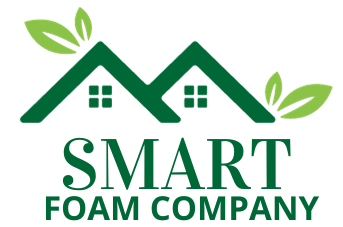Foam insulation is an increasingly popular choice for homeowners and builders seeking effective, energy-efficient solutions to keep indoor spaces comfortable and reduce energy costs. With the growing emphasis on sustainable living, understanding foam insulation types, benefits, and best practices is essential for those looking to make informed decisions about their insulation needs. This comprehensive guide will walk you through everything you need to know about foam insulation.
Types of Foam Insulation
1. Spray Foam Insulation
Spray foam is a versatile type of foam insulation that comes in two forms: open-cell and closed-cell.
– Open-Cell Foam: This lighter and less dense version is excellent for controlling sound and insulating interior walls. Although it has a lower R-value, it expands significantly, filling gaps effectively.
– Closed-Cell Foam: Known for its higher density and superior moisture resistance, closed-cell foam boasts a higher R-value, making it ideal for insulating exteriors and areas prone to moisture.
2. Foam Board Insulation
Foam board, or rigid foam panels, is typically made from polystyrene, polyisocyanurate, or polyurethane.
– Expanded Polystyrene (EPS): Often the least expensive option, EPS provides decent insulation with moderate moisture resistance.
– Extruded Polystyrene (XPS): Known for its smooth surface and higher R-value, XPS offers better insulating power and moisture resistance than EPS.
– Polyisocyanurate (Polyiso): Polyiso foam panels are known for their high R-value and are often faced with foil to boost their reflective properties.
Benefits of Foam Insulation
1. Energy Efficiency
Foam insulation creates an airtight seal, significantly reducing energy loss in a building, which leads to lower heating and cooling costs.
2. Moisture Barrier
Closed-cell spray foam and foam boards offer excellent moisture resistance, which helps prevent mold growth and improves the building’s structural integrity.
3. Enhanced Comfort
Foam insulation helps maintain consistent indoor temperatures and reduces drafts, improving overall comfort.
4. Sound Control
Open-cell spray foam is particularly effective at absorbing sound, making it an excellent choice for interior walls and ceilings.
5. Environmental Impact
Increasing insulating efficiency reduces the carbon footprint by lowering energy consumption. Many foam products are also created with environmentally friendly blowing agents.
Best Practices for Foam Insulation
1. Proper Installation
Hiring a qualified professional for installation, particularly for spray foam, is essential to ensure maximum effectiveness and safety. Improper installation can lead to gaps, reduced efficiency, and potential health risks.
2. Understanding R-Values
Choose the right type of foam insulation with the proper R-value for your specific climate and building needs. The higher the R-value, the better the insulating power.
3. Addressing Moisture Concerns
Always consider the moisture conditions of the area to be insulated. Closed-cell foam or wrapped foam boards should be used in areas prone to moisture exposure.
4. Regulatory Standards
Ensure that the chosen insulation products meet local building codes and standards. Some areas may have restrictions or specific requirements for foam insulation materials.
5. Ventilation
Especially when using airtight insulation solutions, make sure that the building’s ventilation system is adequate to maintain indoor air quality.
Foam insulation is a highly effective solution for a wide range of residential and commercial applications. By understanding the types, benefits, and best practices, you can make informed choices that enhance the insulation efficiency and sustainability of your spaces. Whether you are embarking on a new construction project or retrofitting an existing structure, foam insulation can play a critical role in achieving energy efficiency and comfort.
